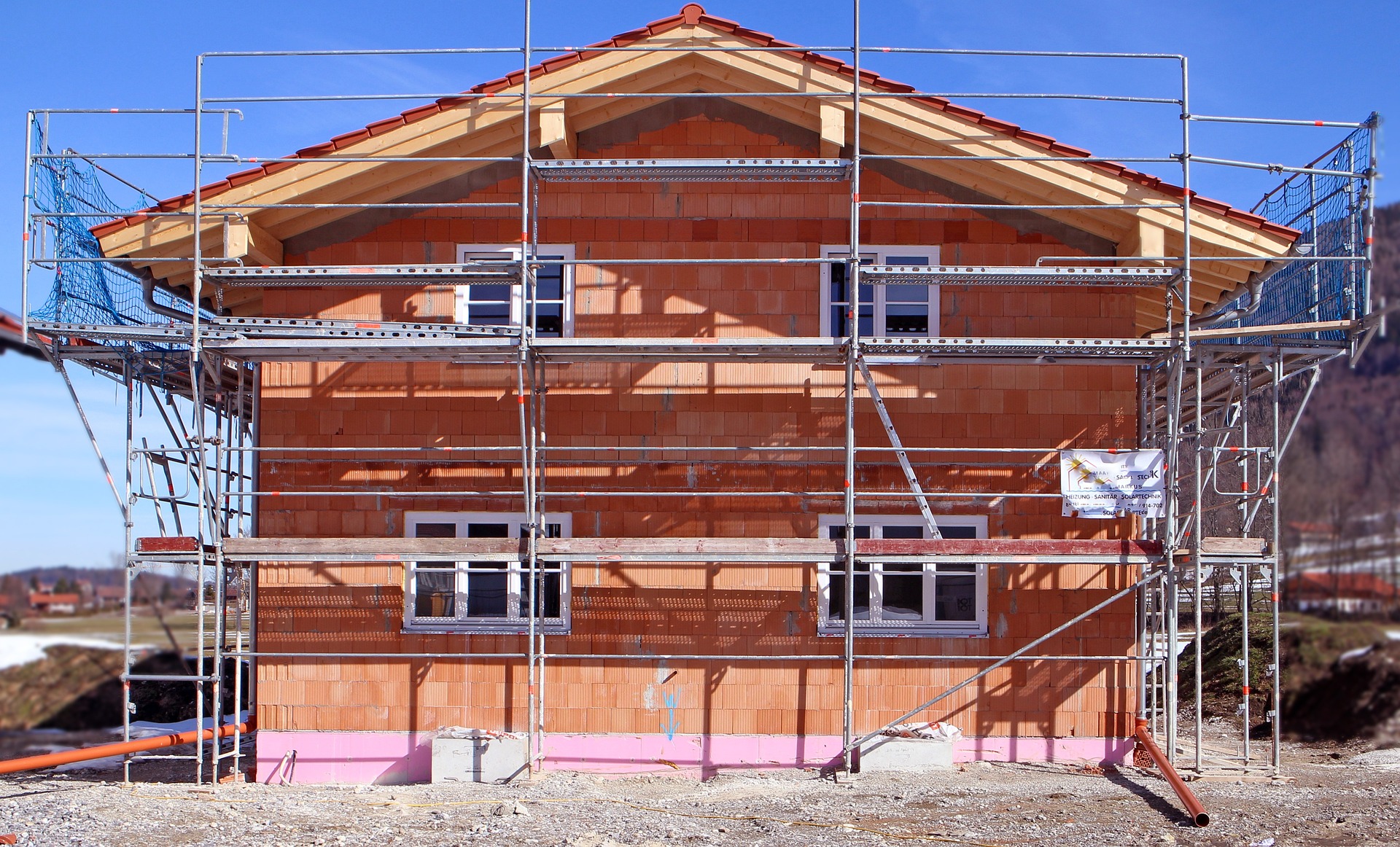Reliable Building Materials for Solid, Stylish Spaces
Solid, long-lasting spaces start with quality building materials—no unnecessary complexity, no overstated claims. Selected building materials prioritize practical performance, compliance with industry standards, and adaptability to diverse construction needs. Whether for home renovations or commercial projects, every material undergoes basic quality checks to help lay a stable foundation for spaces, balancing functionality, safety, and aesthetic appeal.

Building materials form the backbone of any construction project, determining not just structural integrity but also design possibilities and long-term performance. Whether you’re constructing a residential home, commercial space, or undertaking a renovation project, the selection of appropriate materials significantly influences the outcome. This article explores how to choose reliable building materials that balance durability with style, ensuring your spaces remain solid and attractive for years to come.
How to Select Building Materials That Match Home/Commercial Project Needs?
Selecting the right building materials begins with a clear understanding of your project requirements. For residential projects, factors like climate conditions, local building codes, and personal aesthetic preferences play crucial roles. Commercial projects may prioritize durability, fire resistance, and maintenance costs alongside appearance.
Start by establishing your project’s specific needs—structural requirements, insulation values, acoustic properties, and visual elements. Consider the building’s intended lifespan and future maintenance capabilities. For instance, while natural stone offers exceptional durability and timeless appeal, it requires more specialized installation and may carry higher upfront costs than manufactured alternatives.
Consult with architects or builders who can provide insights into material performance in your specific environment. They can recommend options that balance your design vision with practical considerations like local availability, installation expertise, and budget constraints.
What Are the Standardized Building Material Options for Modern Construction?
Modern construction relies heavily on standardized materials that meet established quality benchmarks. These materials undergo rigorous testing to ensure they perform consistently across various applications and conditions.
Concrete remains a fundamental material, with innovations like high-performance and self-healing varieties expanding its applications. Steel framing offers exceptional strength-to-weight ratios for commercial and multi-story residential buildings. Engineered wood products like cross-laminated timber (CLT) and laminated veneer lumber (LVL) provide sustainable alternatives with predictable performance characteristics.
For exterior applications, fiber cement siding combines durability with design flexibility, while advanced insulation materials like structural insulated panels (SIPs) and spray foam maximize energy efficiency. Interior finishes now include low-VOC paints, recycled content tiles, and sustainable flooring options that contribute to healthier indoor environments.
These standardized materials come with detailed technical specifications, making it easier for designers and builders to select appropriate options for specific applications while ensuring compliance with building codes.
What Makes Compliant Building Materials a Practical Choice?
Building code compliance isn’t just a legal requirement—it’s a practical approach to ensuring safety, durability, and performance. Compliant materials have demonstrated their ability to meet minimum standards for fire resistance, structural integrity, and other critical factors.
Choosing code-compliant materials simplifies the approval process with local building authorities, potentially saving time and preventing costly rework. These materials typically come with clear installation guidelines that help ensure proper application, reducing the risk of failures or defects.
Beyond basic compliance, many materials now carry additional certifications addressing environmental impact, indoor air quality, and resource efficiency. Look for certifications like Forest Stewardship Council (FSC) for wood products, GREENGUARD for low-emission materials, or Cradle to Cradle for comprehensive sustainability assessment.
Compliant materials often represent the industry standard for performance, making them easier to source, install, and replace if necessary. This standardization translates to more predictable costs and timelines for construction projects.
How to Store and Handle Building Materials to Preserve Their Performance?
Even the highest quality building materials can fail prematurely if improperly stored or handled. Proper storage begins with understanding each material’s vulnerabilities to moisture, temperature fluctuations, UV exposure, and physical damage.
Wood products should be stored off the ground on level supports to prevent warping, with protective coverings that allow airflow to prevent moisture buildup. Cement and similar powdered products require dry, covered storage to prevent premature hydration. Steel and metal components need protection from precipitation to prevent corrosion, while insulation materials must remain dry to maintain their thermal properties.
On construction sites, establish designated storage areas with appropriate protection from the elements. Implement inventory systems to ensure materials are used in the correct sequence, preventing prolonged exposure. Train handling crews on proper lifting techniques and material-specific considerations to prevent damage during movement.
For long-term storage, consider climate-controlled environments for sensitive materials like adhesives, sealants, and specialized finishes that may degrade under extreme temperature conditions.
What Should You Know About Building Material Sizing and Compatibility?
Standardized sizing and compatibility between building materials are essential for efficient construction and reliable performance. Understanding dimensional standards helps avoid costly errors and ensures components fit together as intended.
Most building materials follow established dimensional conventions—lumber comes in standard lengths and cross-sections, while sheet goods like plywood and drywall have consistent thicknesses and dimensions. These standards facilitate precise estimating, reduce waste, and simplify installation.
Compatibility extends beyond physical dimensions to chemical and performance characteristics. Some materials may react adversely when placed in direct contact—for example, certain metals can accelerate corrosion in others through galvanic reactions. Adhesives, fasteners, and sealants must be compatible with both the materials they join and the environmental conditions they’ll face.
Modern building systems often integrate multiple materials designed to work together—such as weatherproofing membranes, insulation, and cladding systems. Understanding these relationships ensures the building envelope functions properly as a system rather than as isolated components.
Building Material Selection for Different Usage Scenarios
Different building applications demand specific material properties to ensure optimal performance. Exterior materials must withstand weather exposure, while interior materials focus on aesthetics, acoustics, and indoor air quality.
For foundations and structural elements, engineered concrete and steel provide predictable strength and durability. These materials form the building’s core support system and must be selected based on load calculations and soil conditions.
Exterior walls and roofing materials serve as the building’s protective shell. Options range from traditional brick and stone to modern composite materials, each offering different combinations of durability, insulation value, and aesthetic appeal. Climate considerations heavily influence these choices—materials that excel in dry regions may perform poorly in humid coastal environments.
Interior finishes balance functional requirements with design objectives. Flooring selections vary based on traffic patterns, moisture exposure, and acoustic goals. Wall and ceiling materials contribute to fire safety, sound control, and visual comfort. Throughout the building, mechanical, electrical, and plumbing systems require specialized materials suited to their specific functions.
By matching materials to their intended usage scenarios, builders can optimize performance while controlling costs and ensuring long-term satisfaction.
The thoughtful selection of reliable building materials creates spaces that are not only structurally sound but also visually appealing and functionally efficient. By understanding material properties, compliance requirements, proper handling techniques, and compatibility considerations, construction professionals and property owners can make informed decisions that enhance project outcomes. Whether prioritizing sustainability, durability, or aesthetic impact, today’s diverse range of standardized building materials offers solutions for virtually any construction challenge, ensuring solid and stylish spaces for generations to come.




